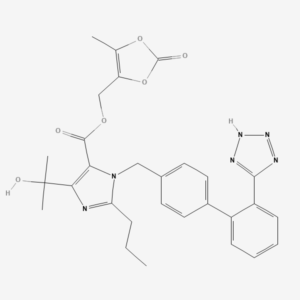Polymers, both natural and synthetic, are integral to our everyday lives. From the polyethylene in plastic bags to the DNA in our cells, polymers exhibit a versatility that is as impressive as it is beneficial. Among this diverse group of molecules, polyallylamine hydrochloride (PAH) stands out, primarily due to its unique properties and extensive applications. This comprehensive blog post will guide you through an in-depth exploration of PAH.
A PRIMER ON POLYALLYLAMINE HYDROCHLORIDE
Polyallylamine hydrochloride, also known as PAH, is a synthetic, water-soluble polymer. It belongs to the family of polyamines, which are compounds characterized by the presence of multiple amine functional groups. In the case of PAH, these functional groups contribute to its high positive charge, making it a cationic polymer.
The structure of PAH consists of repeated units of allylamine hydrochloride, and it is this architecture that lends it the qualities that make it desirable for various applications. It can form thin films via layer-by-layer (LbL) deposition, bind strongly with negatively charged molecules, and maintain stability in diverse conditions.
DELVING INTO THE SYNTHESIS OF PAH
The journey to the formation of PAH involves the polymerization of allylamine in the presence of a radical initiator. This process is known as free radical polymerization, a common method in polymer chemistry.
During this process, allylamine molecules link together in a chain-like structure to form polyallylamine. The concurrent addition of hydrochloride forms the final product – polyallylamine hydrochloride.
KEY PROPERTIES THAT DEFINE PAH
EXCELLENT WATER SOLUBILITY
Thanks to its polar nature, PAH exhibits high solubility in water. The presence of numerous positively charged amine functional groups make it polar, enabling it to dissolve readily in polar solvents such as water.
STRONG CATIONIC CHARACTER
Due to the many amine groups present in its structure, PAH carries a strong positive charge. This makes it a cationic polymer, which can form robust interactions with negatively charged surfaces or molecules.
STABILITY AND ADAPTABILITY
PAH stands out for its impressive stability across a variety of pH levels and temperatures. This versatility is a crucial asset in many applications, allowing PAH to function effectively in different environments. The adaptability of PAH is further highlighted by its ability to form thin films, gels, and complexes with a wide range of materials.
THE EXPANSIVE APPLICATIONS OF POLYALLYLAMINE HYDROCHLORIDE
ROLE IN WATER TREATMENT
The properties of PAH make it an excellent candidate for water treatment processes. Its strong positive charge allows it to coagulate and flocculate suspended particles, enabling their efficient removal from water. Moreover, due to its high water solubility, PAH can be easily mixed and distributed within the water.
AN ESSENTIAL COMPONENT IN LAYER-BY-LAYER (LBL) ASSEMBLY
The creation of thin films using the layer-by-layer assembly technique often relies on PAH. Its capacity to form stable bonds with other materials and layers makes it an effective bridging component, enhancing the stability of the final film.
APPLICATION IN DRUG DELIVERY SYSTEMS
PAH has found substantial utility in the biomedical field, particularly in drug delivery systems. Owing to its properties, it can be used to create nano or microcapsules, which can encapsulate drugs and deliver them at controlled rates. This is especially significant for drugs that need precise dosing and targeted delivery.
PAH IN THE TEXTILE INDUSTRY
PAH plays a pivotal role in the textile industry as well. It serves as a fabric softener and antistatic agent. Given its positive charge, it can bind to negatively charged surfaces, reducing static electricity and enhancing the softness of the fabric.
A DISCUSSION ON SAFE USE AND ENVIRONMENTAL IMPACT
Despite the numerous benefits PAH offers, it is crucial to be mindful of the potential environmental impact it could have. Although it isn’t classified as a hazardous substance, unchecked and excessive discharge of PAH into the environment can have detrimental effects on water quality and aquatic life.
A FINAL WORD: UNLEASHING THE POTENTIAL OF POLYALLYLAMINE HYDROCHLORIDE
Polyallylamine hydrochloride, with its versatile properties and extensive applications, is a shining example of the power of polymers. Whether it’s aiding water treatment, facilitating drug delivery, enhancing textile quality, or playing a part in thin film production, the potential of PAH is vast and varied.
However, as we continue to harness the benefits of such materials, it is our collective responsibility to do so in an environmentally conscious manner. With careful and responsible use, polyallylamine hydrochloride can indeed be the polymath of the polymer world, driving innovation and improving the quality of life.




